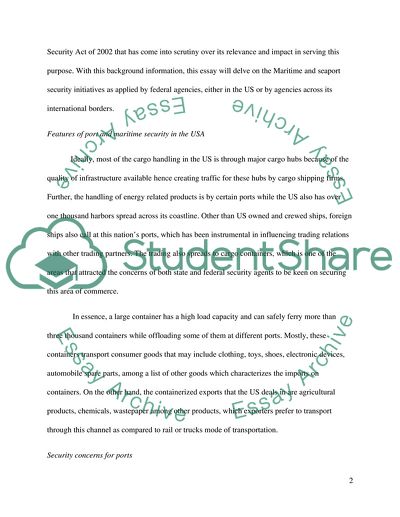Cite this document
(“Maritime and Port Security Initiatives by Federal Agencies Research Paper”, n.d.)
Maritime and Port Security Initiatives by Federal Agencies Research Paper. Retrieved from https://studentshare.org/miscellaneous/1630753-maritime-and-port-security-initiatives-by-federal-agencies
Maritime and Port Security Initiatives by Federal Agencies Research Paper. Retrieved from https://studentshare.org/miscellaneous/1630753-maritime-and-port-security-initiatives-by-federal-agencies
(Maritime and Port Security Initiatives by Federal Agencies Research Paper)
Maritime and Port Security Initiatives by Federal Agencies Research Paper. https://studentshare.org/miscellaneous/1630753-maritime-and-port-security-initiatives-by-federal-agencies.
Maritime and Port Security Initiatives by Federal Agencies Research Paper. https://studentshare.org/miscellaneous/1630753-maritime-and-port-security-initiatives-by-federal-agencies.
“Maritime and Port Security Initiatives by Federal Agencies Research Paper”, n.d. https://studentshare.org/miscellaneous/1630753-maritime-and-port-security-initiatives-by-federal-agencies.


